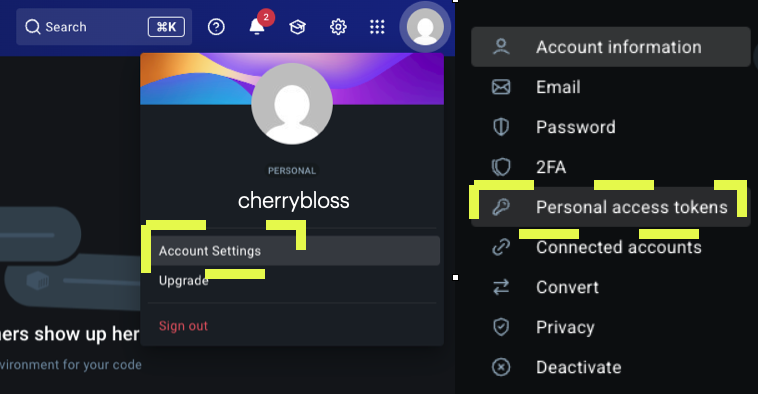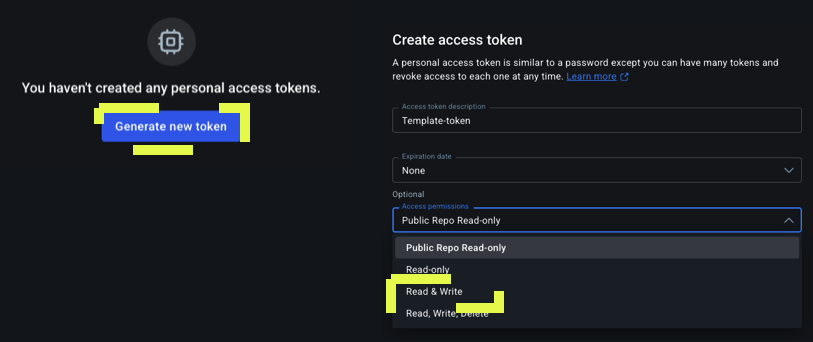Dockerize your App
Containerize your app to make it available via a public Docker link.
This page details the process of containerizing your app ahead of:
to enable it to be deployed at-a-click from NodeOps Cloud Marketplace, with video and step-by-step guides.
Prerequisites
- Unix environment
- If required: enough bandwidth for Docker app download (>500 MB)
- App to containerize
Or use our starter app.
Set up Docker
Step 1. Set up locally
If you have an existing account, skip to the next step.
- Open the Docker app on your local machine, or download it at docker.com/get-started.
Show me steps
See full steps if download and setting up account:
- Accept Ts&Cs
- Use recommended settings
- Enter system password
- If required: create account
Step 2. Create personal access token
- Signed in to Docker Hub, navigate to your profile (top right), and click Account Settings.
Show me

- Click Generate new token and give your new Personal Access Token (PAT):
- Description
- Expiration
- Read and write access
Show me

Step 3: Run Docker
- With Docker Desktop running on your machine, open a terminal window and enter:
docker login -u {your username}
- Respond to the terminal prompt for your Docker Hub PAT copied previously.
Step 4. Containerize your app
In order to publish a Docker image of your application, your app must have a Dockerfile.
A Dockerfile defines the blueprint to build your Docker image. It specifies the base image (such as, python:3.9 node:18), details how to install dependencies, specifies how to copy your app’s code into the image, and the command to run your application when the container starts.
The Dockerfile specification for the NodeOps Starter Template app would, therefore, be:
# Use Node.js LTS version
FROM node:20-slim
# Create app directory
WORKDIR /usr/src/app
# Copy package files
COPY package*.json ./
# Install dependencies
RUN npm install
# Copy app source
COPY . .
# Expose the port the app runs on
EXPOSE 3000
# Command to run the application
CMD ["npm", "start"]
Step 5. Publish to Docker Hub
- Logged in to Docker, create a Dockerfile in your app's root directory. Build the image with:
docker build -t {yourusername/yourappname} .
User cherrybloss who has developed the blossom app would run:
docker build -t cherrybloss/blossom .
- Build and push the image to Docker Hub with:
docker build -t your_username/template_name:version . --push --platform linux/amd64
Explain command
| Part | Meaning |
|---|---|
docker build | Build a Docker image |
-t your_username/template_name:version | Tag the image (with your Docker Hub username, a name, and a version) |
. | Use the current directory (where the Dockerfile is) |
--push | Automatically push the built image to Docker Hub after it's built |
--platform linux/amd64 | Build the image for the Linux/AMD64 architecture (ensures compatibility on Cloud or Linux servers) |
What next?
- Call your Docker image from a template
- Submit the template to NodeOps Cloud Marketplace